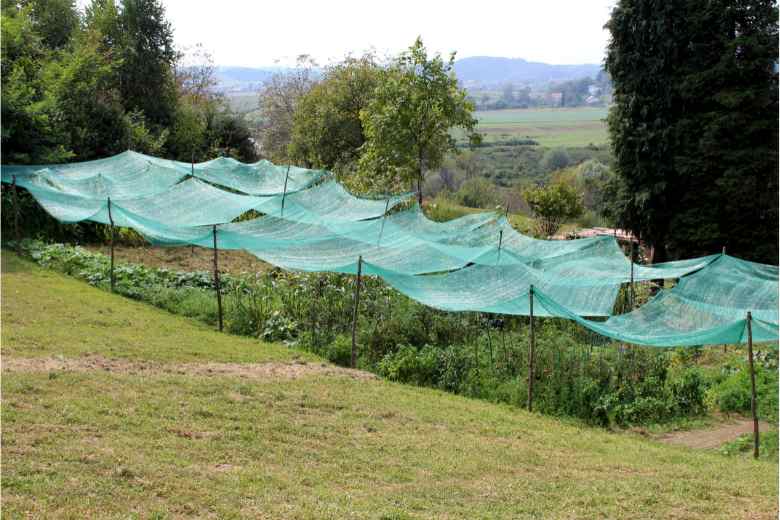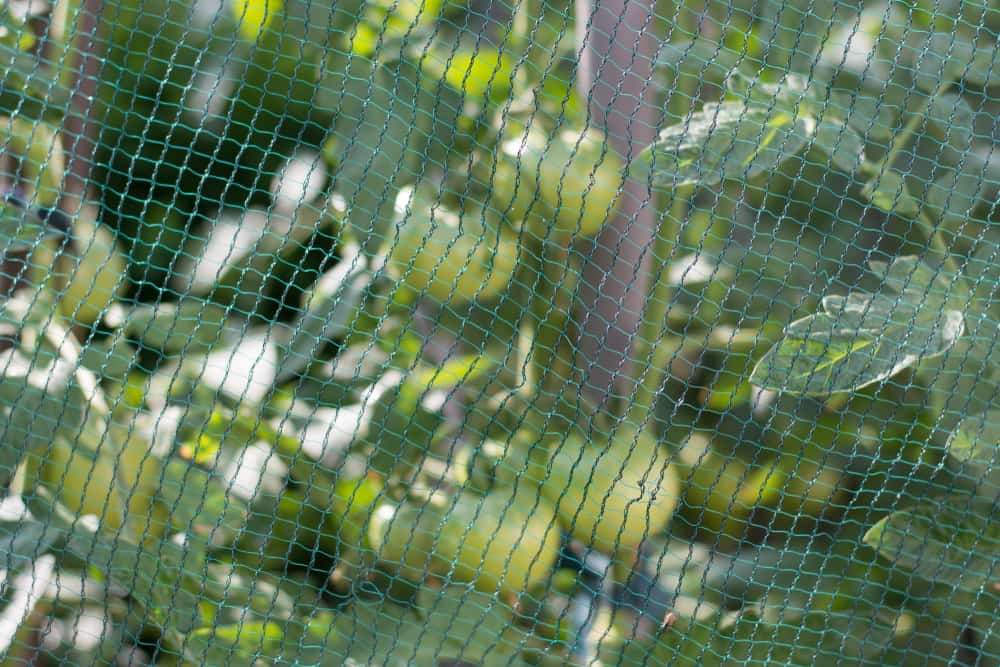
Tomatoes are one of the most popular vegetables to grow in a home garden, but they can be vulnerable to pests and other environmental problems. Covering tomato plants with netting is an effective way to protect them from birds, insects, and other pests, while also allowing for air circulation and access to sunlight.
This article will provide a step-by-step guide on how to cover tomato plants with netting, including tips on the best type of netting to use and how to ensure the netting is securely fastened. With the right netting and a few simple steps, you can protect your tomatoes from pests and help ensure a successful harvest.
Choosing the Right Netting
Choosing the right netting for your needs can be an overwhelming task. With so many options available, it can be difficult to decide which type of netting is best for your particular application.
The key to success is to understand the various types of netting and their unique characteristics, and then determine which one will provide the best protection and performance for your situation. Consider factors such as size, strength, and resistance to wear and tear.
With the right netting in place, you can be sure that you’ll have a net that will last for years to come.
Step-by-Step Guide on How To Cover Tomato Plants With Netting
Step 1: Purchase the Right Netting:
Choose a net with small enough holes to keep pests out but large enough to allow pollinating insects in. UV-stabilized, high-density polyethylene netting is a popular choice as it’s durable and weather resistant.
Step 2: Measure and Cut:
Measure the area around your tomato plants, ensuring you have enough netting to cover them completely. Remember to allow extra for securing the netting at the base.
Step 3: Secure the Netting:
Use garden stakes or poles to create a structure over your plants. Drape the netting over the structure, making sure all plants are covered. Secure the netting to the ground using pegs or weights.
Step 4: Maintenance:
Regularly check the netting for any damage and make repairs as necessary. Also, ensure the netting is not restricting the growth of the plants.
Note:
While covering tomato plants with netting, consider adding a simple irrigation system underneath the netting. This way, your plants can get regular water, and the netting won’t interfere with the watering process. Additionally, remember to lift the netting carefully when harvesting.

Ensuring the Netting Fits ( Extra Features)
Netting is an essential component of many industries, from sports to construction. Ensuring the netting fits correctly and securely is an important part of using it successfully and safely. The nets need to be measured and cut to the right size and shape to fit the particular space or application. It’s important to understand the properties of the material and the exact dimensions of the space to ensure the netting is installed correctly. The netting must be secured tightly and checked regularly for any damage or wear. A netting that fits properly will ensure optimal safety, performance, and longevity.
Why You Need to Cover Tomato Plants with Netting
Tomato plants are vulnerable to numerous threats that can damage them, limit their growth, or entirely ruin their harvest. As such, it is vital to use preventive measures like covering them with netting. Here are some compelling reasons why you should consider this effective protection strategy:
1. Pest Protection
Pests, including birds, insects, and small mammals, pose a significant threat to tomato plants. They can damage the plant, eat the leaves and fruits, or spread diseases. Covering your plants with netting can prevent these pests from accessing the plant while still allowing beneficial pollinators through.
2. Weather Shield
Unexpected weather changes can have detrimental effects on your tomato plants. For instance, strong winds can break branches, while hail or heavy rain can damage the fruits and leaves. Netting acts as a weather shield, protecting your plants from these harsh conditions.
3. Disease Prevention
Certain diseases and fungi can spread quickly among tomato plants. A net can act as a barrier, preventing the spread of these harmful agents, thus promoting healthier plant growth.
4. Controlled Pollination
If you’re interested in cross-pollination for tomato plant breeding, netting can help control pollination. It can prevent unwanted pollinators, allowing only the desired ones to access the plants.
5. Enhanced Growth Environment
Covering tomato plants with netting can create a more stable growth environment. It can provide shade during hot days, retain moisture, and reduce temperature fluctuations, which all contribute to better plant growth.
In essence, using netting for your tomato plants is a preventive measure that ensures healthier plants and a more productive harvest. It’s an easy and cost-effective way to keep your plants safe and thriving, thus ensuring your gardening efforts are well rewarded.
Challenges to Face While Covering Tomato Plants with Netting
While using netting for tomato plants is a worthwhile endeavor, it does not come without its challenges. As a gardener, recognizing these obstacles in advance can help you mitigate them effectively. Here’s what you might come across:
1. Choosing the Right Netting
With so many types of netting available in the market, finding the right one for your tomato plants can be daunting. You must ensure that the netting is sturdy, weather-resistant, and has small enough holes to keep out pests, but large enough to allow pollinators through.
2. Installation Difficulties
Installing the netting without causing damage to the tomato plants can be tricky, especially if the plants are already mature. You need to carefully drape the netting over the plants without breaking branches or damaging fruits.
3. Restricting Plant Growth
If not properly installed and regularly checked, the netting can potentially restrict the growth of tomato plants. As the plants grow, they might push against the netting, which could cause damage or deformity if not addressed in time.
4. Maintenance and Inspection
Netting requires regular inspection and maintenance to ensure it is still serving its purpose and is not damaged. Over time, the netting may tear, sag, or become loose, thereby losing its effectiveness.
5. Watering and Harvesting
Watering plants through the netting can be a challenge, especially if you’re using a watering can or hose. Additionally, when the tomatoes are ripe for harvesting, the netting must be carefully lifted to avoid damaging the plants or fruits.
6. Wind Issues
Strong winds can dislodge or damage the netting. Therefore, you need to ensure it is securely fastened, which can require additional time and effort.
Despite these challenges, the benefits of using netting for tomato plants far outweigh the downsides. By planning ahead, understanding what to expect, and taking a few preventative measures, you can overcome these challenges and provide your tomato plants with the protection they need to thrive.
FAQs About the How To Cover Tomato Plants With Netting
What types of netting are suitable for covering tomato plants?
Answer: Lightweight, porous netting such as knitted shade cloth or tulle are ideal for covering tomato plants.
How often should I check the netting around my tomato plants?
Answer: It is important to check the netting around your tomato plants every few days to make sure it is still securely in place and not trapping any insects, birds, or animals.
How long should I leave the netting on my tomato plants?
Answer: It is best to remove the netting when the plants are mature and the fruit is beginning to ripen. This will ensure that the tomatoes have enough access to sunlight and air to reach their full potential.
Conclusion
Properly using netting to cover tomato plants is an easy and effective way to protect your garden from pests. It is a cost-effective and environmentally friendly way to keep your plants safe from birds, small animals, and insects. Not only does it help keep your plants safe, but it also helps promote enhanced growth and improved yields. Tomato plants, in particular, benefit from being covered with netting as it helps keep the fruits clean and free from damage. With a little bit of effort and the right netting, you can ensure that your tomato plants stay healthy and produce a bountiful harvest.





